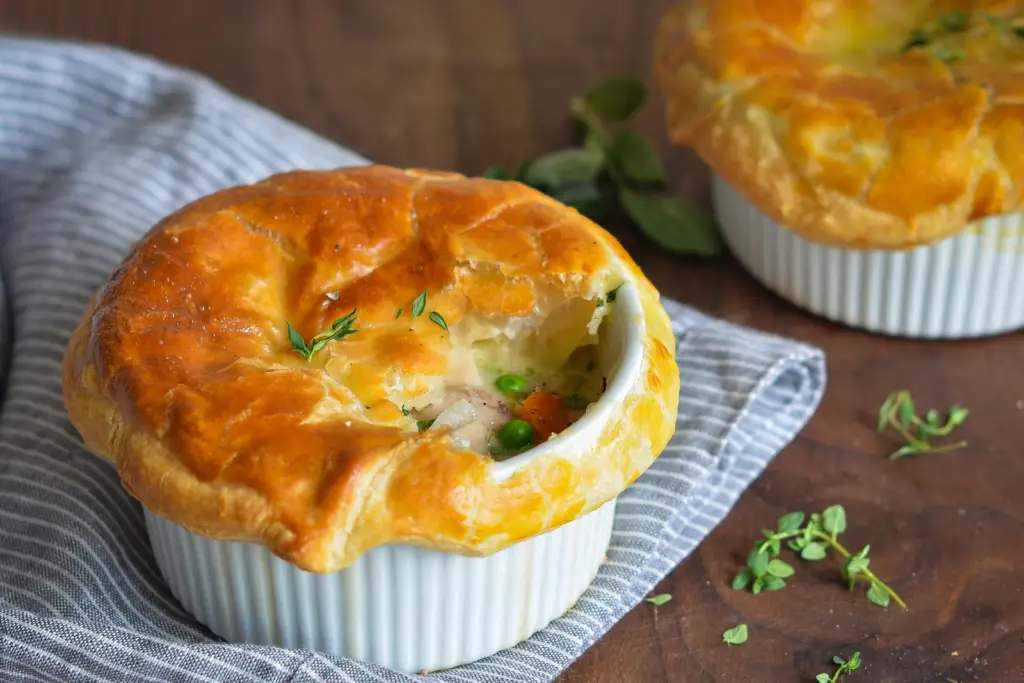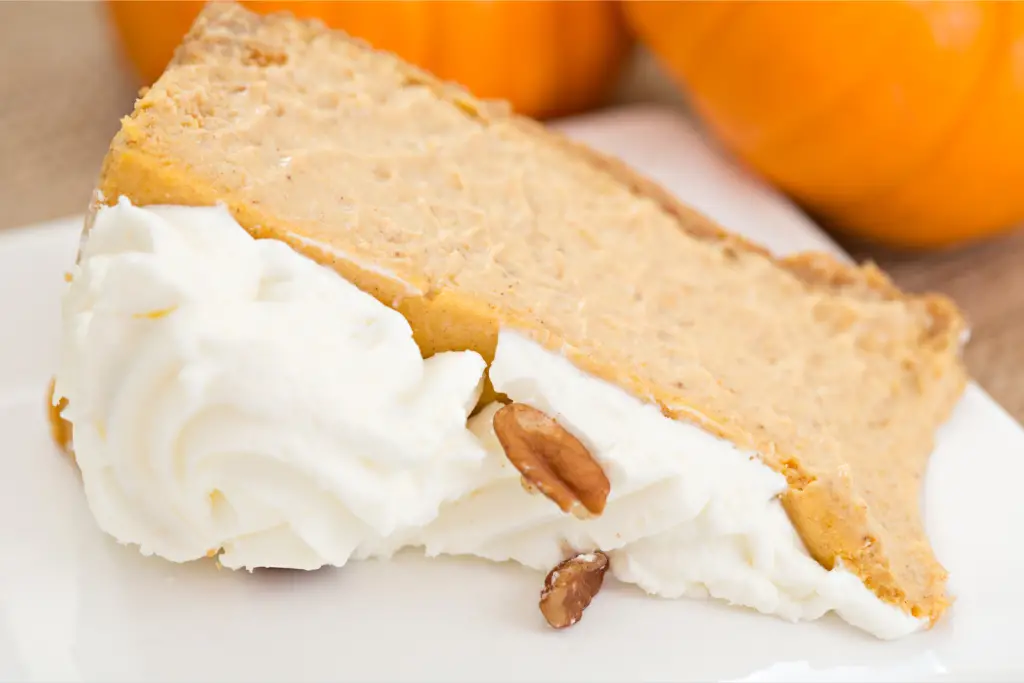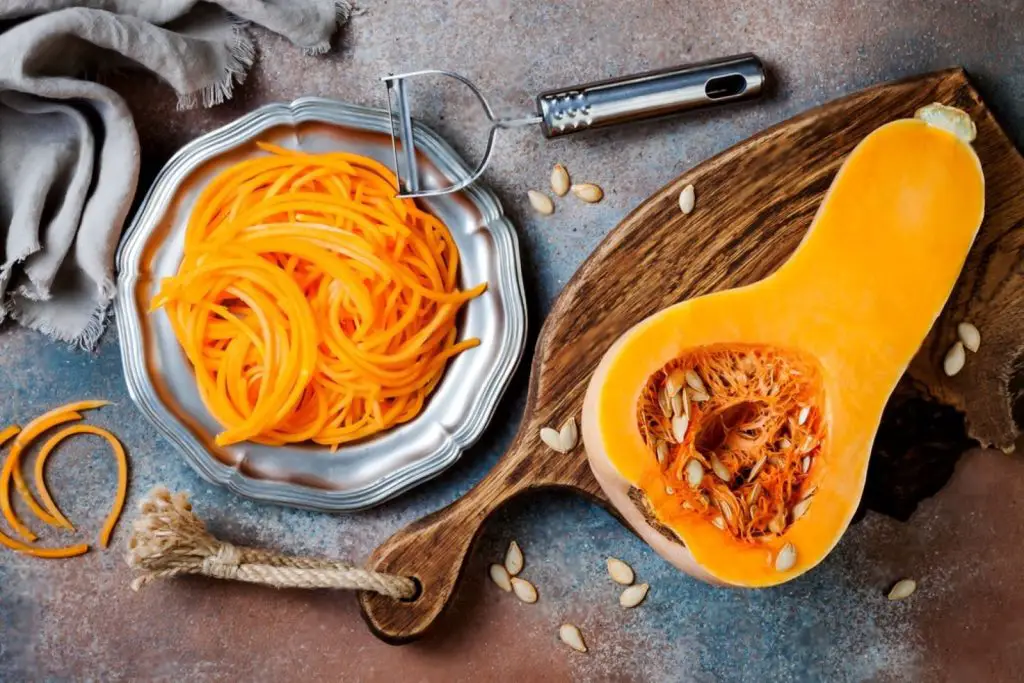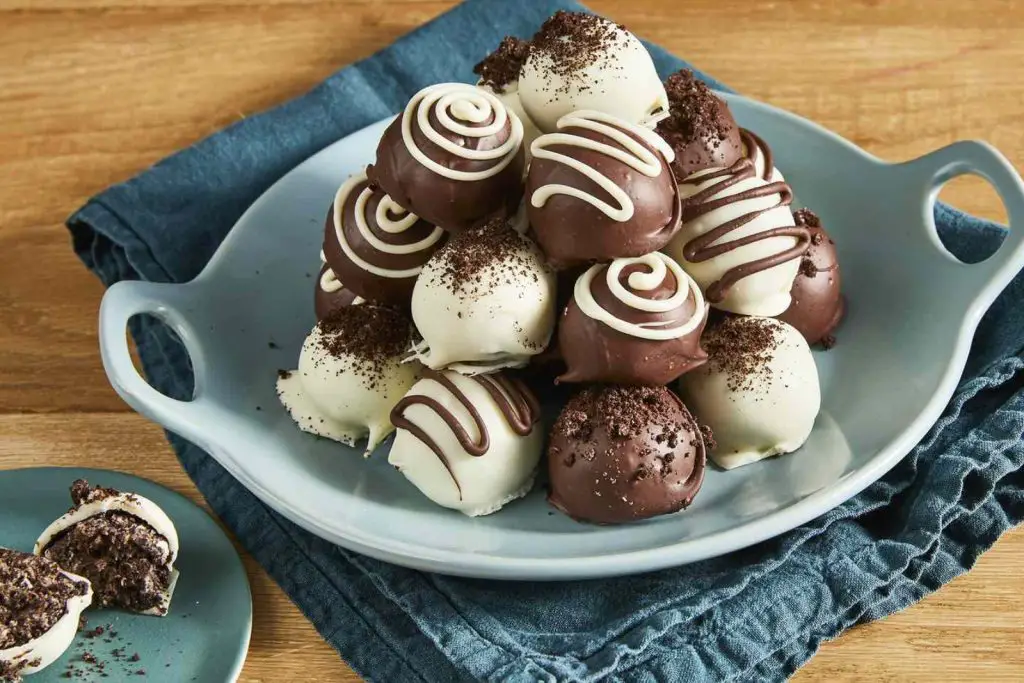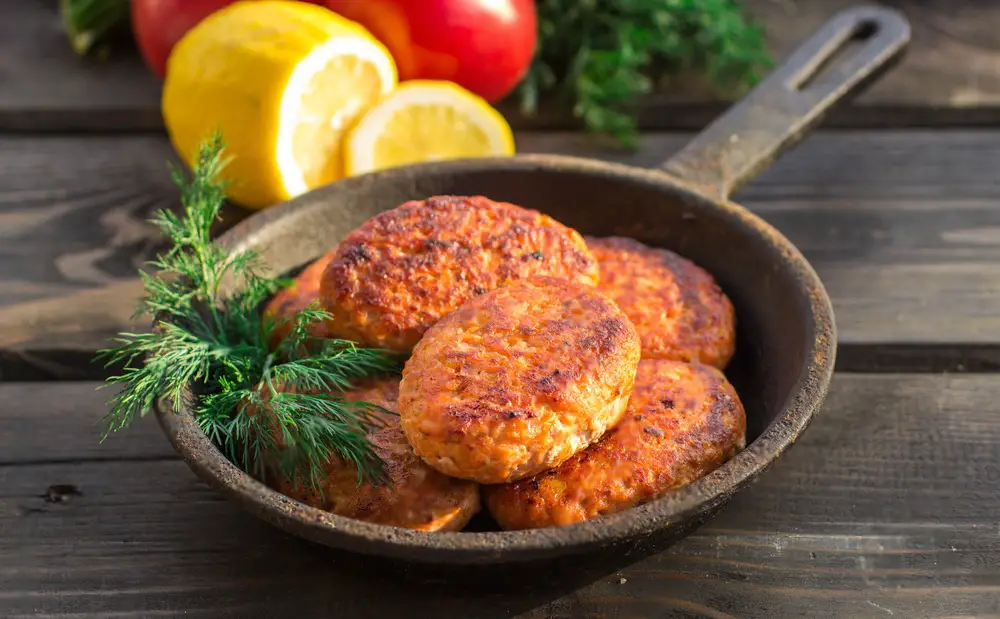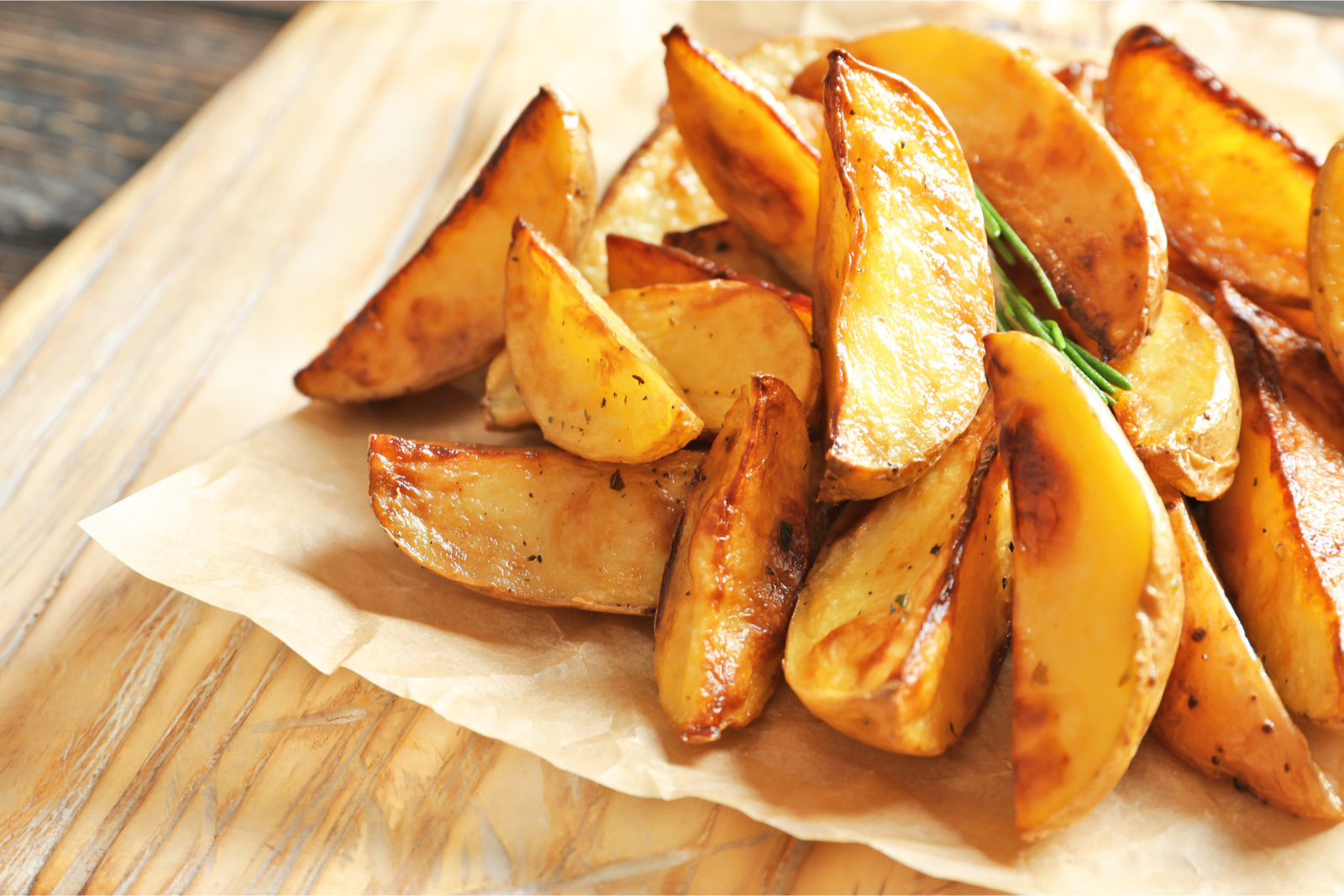
Potato wedges, with their irresistible crispy exterior and soft, fluffy interior, are a beloved and satisfying side dish that complements a wide range of meals. These hearty wedges, cut from whole potatoes and seasoned to perfection, offer a delightful blend of flavors and textures that make them a favorite among both kids and adults. Whether served as a delightful accompaniment to burgers, grilled meats, or enjoyed on their own with a selection of dipping sauces, potato wedges bring a touch of comfort and indulgence to any dining experience. However, making a large batch of potato wedges can sometimes lead to leftovers, raising the question of how to best preserve their delectable crunch and taste. Freezing potato wedges emerges as a practical solution to extend their enjoyment, allowing you to savor their irresistible texture and deliciousness whenever the craving for these hearty delights strikes, without the need for a fresh preparation. In this guide, we will explore the best practices for freezing potato wedges, ensuring that their crispy exterior, tender center, and delightful seasoning remain lovingly preserved, ready to be enjoyed as a comforting side or a satisfying snack, even when you wish to indulge in some crispy goodness at your convenience.
Here are the simple steps to freeze potato wedges:
- Step 1: Prepare the Potato Wedges
- Step 2: Cut the Potatoes into Wedges
- Step 3: Parboil the Potato Wedges
- Step 4: Cool the Potato Wedges
- Step 5: Arrange the Potato Wedges for Freezing
- Step 6: Flash-Freeze the Potato Wedges
- Step 7: Package and Seal the Potato Wedges
- Step 8: Label and Date the Packages
- Step 9: Store in the Freezer
Step 1: Prepare the Potato Wedges
Preparing the potato wedges is the crucial first step in the process of freezing them. This step involves ensuring that the potatoes are clean, free from dirt, and ready for the freezing process. Here’s an explanation of the different tasks involved in this step:
- Washing the Potatoes: The first thing you need to do is wash the potatoes thoroughly under cold running water. Washing the potatoes is essential as it helps remove any dirt, soil, or residues that may be present on the surface. Properly cleaning the potatoes ensures that no unwanted particles end up in the final frozen product.
- Skin On or Peel: Once the potatoes are clean, you have the option to either leave the skin on or peel them, depending on your preference. Potato skins add a rustic texture to the wedges and contain valuable nutrients like fiber and vitamins. However, some people might prefer a smoother texture and choose to peel the potatoes. The decision is entirely up to you and your personal taste.
- Patting Dry: After washing and, if necessary, peeling the potatoes, it’s essential to pat them dry with paper towels. Removing excess moisture from the potatoes before freezing is important because it helps prevent ice crystals from forming on the surface during freezing. Excess moisture can lead to freezer burn, which can negatively affect the taste and texture of the potato wedges.
By carefully preparing the potato wedges, you set the foundation for successful freezing. Clean, dry, and optionally peeled potatoes are now ready to be cut into wedges and go through the subsequent steps of the freezing process. Taking the time to properly prepare the potato wedges ensures that they will maintain their quality and taste when you decide to enjoy them later after freezing.
Step 2: Cut the Potatoes into Wedges
Transforming the prepared potatoes into the classic potato wedge shape. This involves cutting the potatoes into wedge-like pieces that are not only visually appealing but also practical for even cooking and freezing. Below is an explanation of the tasks involved in this step:
- Using a Sharp Knife: Cutting the potatoes into wedges requires a sharp knife to ensure clean and precise cuts. A dull knife can lead to uneven edges and make the process more challenging. Be sure to use a knife that is comfortable for you to handle and always exercise caution while cutting.
- Careful Cutting: As you cut the potatoes, take your time and be careful with each slice. Potatoes can be relatively sturdy, but uneven or rough cuts can affect their appearance and texture after freezing and cooking. A steady hand and attention to detail will help achieve consistent results.
- Uniform Size: To ensure even cooking and freezing, aim to cut the potato wedges into uniform sizes. This means trying to make each wedge similar in length and thickness. Uniform wedges will cook at the same rate, preventing some pieces from becoming overcooked while others remain undercooked.
- Ideal Thickness: Aim for wedges that are about half an inch to three-quarters of an inch thick. This thickness strikes a balance between achieving a crispy exterior and a fluffy interior when cooking the wedges. Thicker wedges may take longer to cook and freeze, while thinner ones may become too crispy or even overcook.
By carefully cutting the potatoes into uniform wedges of the right thickness, you set the stage for consistent results during the cooking and freezing process. Properly shaped and sized potato wedges will cook evenly and freeze without clumping together, ensuring they remain appetizing and delightful to eat after being frozen.
Step 3: Parboil the Potato Wedges
Parboiling is a crucial step in the process of freezing potato wedges, as it plays a significant role in preserving their quality and texture. Parboiling involves partially cooking the potato wedges in boiling water before freezing them. Here’s an explanation of why parboiling is essential and the steps involved:
- Preserving Texture: Parboiling helps preserve the texture of the potato wedges during the freezing process. When potatoes are frozen without being parboiled, they tend to become mushy and lose their structure. Parboiling partially cooks the wedges, ensuring that the cell structure of the potatoes is maintained even after freezing.
- Boiling Water and Salt: To parboil the potato wedges, start by bringing a pot of water to a rolling boil. Adding a pinch of salt to the boiling water enhances the flavor of the potatoes and provides a slight seasoning that will carry through to the frozen wedges.
- Lowering the Potato Wedges: Carefully lower the prepared potato wedges into the boiling water. You can use a slotted spoon or a kitchen spider to lower them gently into the water to avoid any splashing or injuries from hot water.
- Blanching Time: The potato wedges should be blanched in the boiling water for a specific period. Typically, blanching should take about 4-5 minutes. Blanching time can vary slightly depending on the size and thickness of the wedges. The goal is to partially cook the potatoes without fully softening them.
- Removing from Boiling Water: After the blanching time is up, quickly remove the potato wedges from the boiling water and transfer them to a bowl of ice water. Plunging the partially cooked wedges into ice water halts the cooking process immediately, preventing them from becoming overly soft.
By parboiling the potato wedges, you take a proactive step in ensuring that they maintain their desirable texture and structure during freezing. This process sets the stage for excellent frozen potato wedges that, when properly cooked after freezing, will have a crispy exterior and a fluffy interior, just like freshly made wedges. Parboiling is a valuable technique to help you enjoy tasty and well-preserved potato wedges, even when they have been frozen for an extended period.
Step 4: Cool the Potato Wedges
After the parboiling process is completed, it is essential to cool the potato wedges promptly. Cooling the wedges in ice water is a crucial step that halts the cooking process and prevents them from becoming overcooked or too soft. Here’s an explanation of why cooling the potato wedges is essential and the steps involved:
- Halting the Cooking Process: When the potato wedges are removed from the boiling water, residual heat can continue to cook them, potentially leading to overcooking. Plunging the partially cooked wedges into a bowl of ice water rapidly reduces their temperature, stopping the cooking process immediately. This helps preserve the desired texture and prevents them from becoming mushy.
- Quick Cooling: Cooling the potato wedges quickly is important to retain their firmness and structure. Ice water is highly effective in rapidly lowering the temperature of the wedges, ensuring that they are cooked just enough without losing their shape or texture.
- Soaking in Ice Water: Once transferred to the bowl of ice water, allow the potato wedges to soak for about 5 minutes. This duration is sufficient to cool them down thoroughly while not being long enough to affect their taste or texture negatively.
- Drain Excess Water: After the cooling period, remove the potato wedges from the ice water and drain any excess water. You can use a colander or simply shake off any water to ensure the wedges are not too wet before proceeding to the next steps of the freezing process.
By promptly cooling the potato wedges in ice water, you ensure that they retain their partially cooked state while preventing them from becoming too soft or mushy. This step is crucial for maintaining the quality of the wedges throughout the freezing process and ensures that they will remain appetizing and enjoyable when cooked after being frozen. Cooling the potato wedges effectively sets the stage for successful freezing, allowing you to enjoy delicious and well-preserved potato wedges whenever you desire them.
Step 5: Arrange the Potato Wedges for Freezing
Properly arranging the cooled potato wedges before they are placed in the freezer. This step ensures that the potato wedges freeze individually without sticking together, allowing for easy portioning and preventing clumping. Here’s an explanation of why arranging the potato wedges is important and the steps involved:
- Using a Baking Sheet: To arrange the potato wedges for freezing, you will need a baking sheet lined with parchment paper. The parchment paper prevents the wedges from sticking to the surface and makes it easier to remove them once they are frozen.
- Single Layer Arrangement: Lay the cooled potato wedges in a single layer on the parchment paper. Placing them in a single layer ensures that each wedge has enough space around it to freeze individually. This prevents the wedges from fusing together, allowing you to grab individual portions when needed without having to thaw the entire batch.
- Avoiding Touching: Make sure the potato wedges are not touching each other while arranged on the baking sheet. If the wedges are in contact during freezing, they might freeze together into a clump, making it challenging to separate them when it’s time to cook or serve them.
By arranging the cooled potato wedges in a single layer and ensuring they do not touch each other, you create the ideal conditions for effective freezing. The individual freezing process guarantees that each wedge remains separate and maintains its shape during freezing. Once fully frozen, you can transfer the individual potato wedges into storage containers or freezer bags, knowing that they will be easy to handle and use whenever you’re ready to enjoy them. Properly arranging the potato wedges for freezing is a simple but crucial step that sets the foundation for hassle-free storage and future cooking.
Step 6: Flash-Freeze the Potato Wedges
Flash-freezing is a rapid freezing process that involves exposing the arranged potato wedges to extremely low temperatures for a short period. This step is crucial for preserving the quality of the wedges and preventing them from clumping together during long-term freezing. Here’s an explanation of why flash-freezing is important and the steps involved:
- Rapid Freezing: Placing the baking sheet with the arranged potato wedges in the freezer allows them to be exposed to the freezer’s coldest temperature, causing them to freeze quickly. Rapid freezing is essential because it forms smaller ice crystals within the wedges, minimizing cell damage and preventing the formation of large ice crystals that can affect the texture of the potatoes.
- Preventing Clumping: Flash-freezing ensures that each individual potato wedge freezes separately and maintains its shape. This prevents the wedges from sticking together or forming a large clump during freezing. When you want to use a specific amount of potato wedges later, you can easily take out the exact number you need without thawing the entire batch.
- Duration of Flash-Freezing: The potato wedges should be left to flash-freeze for about 1 to 2 hours. The exact duration may vary depending on the thickness of the wedges and the efficiency of your freezer. However, as a general guideline, an hour or two is sufficient for most home freezers to achieve the desired results.
By flash-freezing the potato wedges, you ensure that they remain individually frozen and maintain their quality throughout the freezing process. The rapid freezing helps preserve their texture, taste, and appearance, allowing you to enjoy delicious and well-preserved potato wedges whenever you choose to use them. Flash-freezing is a practical technique that streamlines the freezing process, making it convenient for you to access and use the potato wedges in your cooking, snacks, or meals.
Step 7: Package and Seal the Potato Wedges
After the potato wedges have undergone flash-freezing, it’s time to properly package and seal them for long-term storage in the freezer. This step is critical for preserving the quality and taste of the potato wedges and preventing freezer burn. Here’s an explanation of why packaging and sealing are important and the different options available:
- Transfer to Airtight Freezer Bags or Containers: Transfer the flash-frozen potato wedges into airtight freezer bags or containers. Airtight packaging is essential as it prevents air from entering the package, which can lead to freezer burn and affect the quality of the wedges over time.
- Squeeze Out Excess Air: Before sealing the freezer bags or containers, make sure to squeeze out any excess air trapped inside. Air contains moisture, and having air pockets can promote freezer burn. Removing the air ensures that the potato wedges are in an environment with minimal moisture, helping to preserve their texture and taste.
- Wrap in Plastic Wrap or Aluminum Foil: Alternatively, if you prefer, you can individually wrap the flash-frozen potato wedges in plastic wrap or aluminum foil before placing them in freezer-safe containers. This method provides an extra layer of protection against freezer burn and helps maintain the wedges’ individual integrity during storage.
Properly packaging and sealing the potato wedges are essential for maintaining their freshness and preventing deterioration in the freezer. By eliminating excess air and using airtight packaging, you create a barrier that protects the wedges from exposure to cold air and moisture, helping them retain their quality for an extended period. Whether you choose to use freezer bags, containers, or individually wrap the wedges, the goal is to ensure that the freezing process is as effective as possible, allowing you to enjoy delicious and well-preserved potato wedges whenever you decide to use them.
Step 8: Label and Date the Packages
Labeling and dating the packages of frozen potato wedges is a crucial step in the freezing process. It involves providing essential information on each package to help you keep track of the contents and ensure you use them in a timely manner. Here’s an explanation of why labeling and dating are important and the benefits they offer:
- Contents Identification: Labeling the packages with the contents, in this case, “Potato Wedges,” allows you to quickly identify what’s inside each package without having to open them. This becomes especially useful if you have a variety of frozen items in your freezer.
- Date of Freezing: Adding the date of freezing on the label allows you to know precisely when the potato wedges were stored in the freezer. Keeping track of the freezing date is vital because frozen foods have a limited shelf life, even though they are safe to eat for an extended period. Knowing the date of freezing helps you monitor the freshness of the wedges and ensure you use the oldest ones first to avoid any potential food waste.
- Rotating Frozen Items: By using the oldest frozen potato wedges first, you practice proper food rotation, preventing any package from sitting in the freezer for too long and potentially losing its quality. Regularly rotating your frozen items ensures you make the most of their peak freshness and taste.
- Easy Organization: Labeling and dating your packages also contribute to better organization in your freezer. When you can quickly identify the contents and the freezing date, you can keep your freezer inventory well-managed and easily find what you need when it’s time to cook or prepare a meal.
By labeling and dating the packages of frozen potato wedges helps you maintain an organized freezer and ensures you can enjoy delicious, high-quality wedges when you decide to use them. It’s a practical and straightforward step that enhances your freezing process and reduces the likelihood of any wedges going to waste due to improper storage or not being used in a timely manner.
Step 9: Store in the Freezer
After properly packaging, labeling, and dating the potato wedges, the final step is to store them in the freezer for long-term preservation. Proper storage is crucial to maintain the quality, taste, and texture of the frozen potato wedges. Here’s an explanation of why storing in the freezer correctly is important and the best practices to follow:
- Maintaining Quality: The freezer provides a controlled environment that keeps the potato wedges at a consistently low temperature, preserving their quality over an extended period. Freezing halts the growth of bacteria and enzymes that can lead to spoilage, ensuring the wedges stay safe to eat.
- Avoiding Temperature Fluctuations: It’s essential to store the sealed packages of potato wedges away from the freezer door and any areas where the temperature might fluctuate frequently. The temperature near the freezer door tends to be slightly higher due to frequent opening and closing, which can affect the quality of the frozen items. Additionally, areas near the vents or compressor might experience temperature variations, so it’s best to avoid these spots as well.
- Properly Arranging Packages: Ensure the packages of potato wedges are neatly arranged in the freezer. Avoid overcrowding the freezer, as this can impede proper air circulation and affect the freezing process. Leave some space between packages to allow for even freezing and easier retrieval.
- Ideal Freezer Temperature: Set the freezer temperature to 0 degrees Fahrenheit (-18 degrees Celsius) or lower. Maintaining a sufficiently low freezer temperature ensures that the potato wedges stay properly frozen and remain safe for consumption.
By storing the sealed packages of potato wedges in the freezer following these best practices, you create the optimal conditions for long-term storage. Properly frozen potato wedges can maintain their quality for up to three months in the freezer, ensuring you have a convenient and delicious side dish or snack option whenever you desire them. Storing the potato wedges correctly is the final step in the freezing process, allowing you to enjoy well-preserved and tasty wedges whenever you decide to use them.
How long can potato wedges last in the freezer?
Potato wedges can last in the freezer for up to three months while maintaining their quality. Properly stored in airtight containers or freezer bags, they remain safe to eat beyond this period, but the taste and texture may gradually decline over time. To enjoy the best flavor and texture, it is recommended to consume them within the three-month timeframe.
Other related questions
How do you defrost potato wedges?
To defrost potato wedges, you have a few options. The safest method is to thaw them in the refrigerator overnight, allowing for gradual thawing without compromising quality. Alternatively, you can defrost in the microwave using the defrost setting, being careful to avoid cooking the wedges. Avoid defrosting at room temperature to prevent bacterial growth and maintain the best texture and taste.
Can you refreeze potato wedges?
Refreezing potato wedges is not recommended. Once thawed, the quality of the wedges may deteriorate, and refreezing can lead to textural changes and loss of taste. Additionally, refreezing can increase the risk of bacterial growth, potentially compromising food safety. It’s best to consume thawed potato wedges promptly and avoid refreezing to maintain their optimal taste and texture.
How do I know if the potato wedges have gone bad after being frozen?
To determine if frozen potato wedges have gone bad, look for signs of freezer burn, such as dry, discolored, or shriveled surfaces. If the wedges appear excessively mushy, have an off-putting odor, or taste rancid, they may have spoiled. When in doubt, it’s safer to discard them rather than risk consuming potentially spoiled food.
Can you freeze sweet potato wedges as well?
Yes, you can freeze sweet potato wedges. Just like regular potato wedges, sweet potato wedges can be frozen by allowing them to cool completely and then storing them in airtight containers or freezer bags. Thaw the frozen sweet potato wedges in the refrigerator before reheating or cooking for best results.
Can you freeze breaded potato wedges?
Yes, you can freeze breaded potato wedges. To freeze breaded potato wedges, arrange them in a single layer on a baking sheet and freeze until solid before transferring them to airtight containers or freezer bags. This method prevents the wedges from sticking together and allows you to remove as many pieces as needed when reheating. Remember to thaw the frozen breaded potato wedges in the refrigerator before cooking or reheating them for optimal results.
Can you freeze potato wedges with different dipping sauces?
While you can freeze potato wedges with different dipping sauces, it is generally recommended to freeze them separately. Freezing the wedges with the sauces can result in changes in texture and flavor when thawed. Instead, freeze the potato wedges in a single layer on a baking sheet, and once they are frozen solid, transfer them to separate airtight containers or freezer bags along with their respective dipping sauces. Thaw the frozen wedges and sauces in the refrigerator before serving for the best taste and texture.
Can you freeze seasoned curly potato wedges?
Yes, you can freeze seasoned curly potato wedges. After seasoning the potato wedges, allow them to cool completely before freezing. Arrange them in a single layer on a baking sheet, freeze until solid, and then transfer them to airtight containers or freezer bags for long-term storage. Thaw the frozen seasoned curly potato wedges in the refrigerator before cooking or reheating to retain their flavor and texture.

